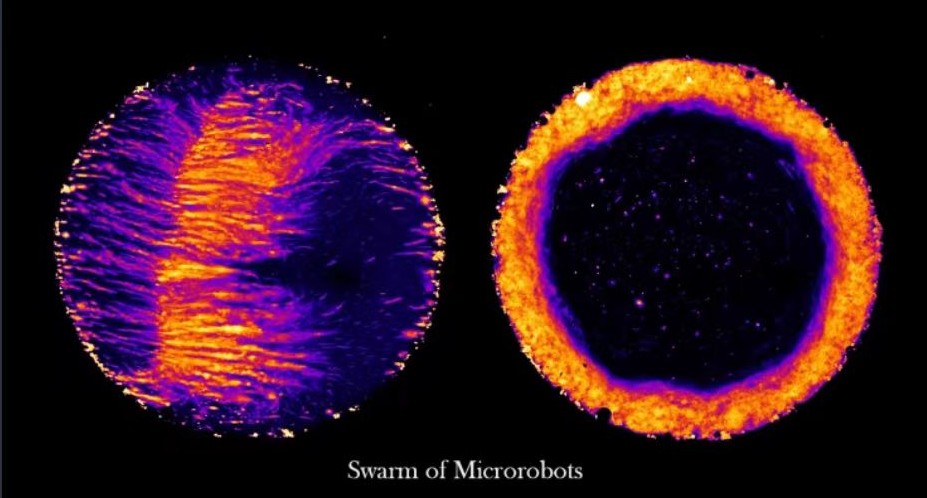📄 Writings
Working Papers
- A Divergence-free Velocity Reconstruction for Fluid Simulation (as Undergraduate Thesis)
-
This paper proposes a particle-in-cell style method, which based on the port-Hamiltonian formulation, to enhance continuity near interfaces when simulating multi-phase flow. We employ the enhanced particle-in-cell method to ensure phase variables bounded and deploy an interpolation method based on vector potential for multiply connected domains. This paper experimentally justifies the enhanced particle-in-cell method and elucidate the importance of divergence-free velocity field.
Journal papers

- Programming structural and magnetic anisotropy for tailored interaction and control of soft microrobots (with Yimo Yan, Chao Song, Zaiyi Shen, Xingyu Ni, Bin Wang, Michael G. Christiansen, Stavros Stavrakis, and Juho Lintuvuori)
-
Nature Communications Engineering volume 3, Article number: 7 (2024) | article
The collective behaviour of swarms, governed by magnetic and hydrodynamic interactions, emerges from the properties of their individual constituents. With combining simulation-guided design and droplet-based microfluidics, we present a versatile, high-throughput technique for fabricating soft microrobots with programmable structural and magnetic anisotropy. Such microrobots consist of iron oxide nanoparticles organized into supra-domain structures and entrapped in a hydrogel matrix that can be elongated independently of its magnetic properties. By applying rotating magnetic fields to resulting swarms, distinct collective behaviours are produced, including gas-like formations, variable crystals, and heterogeneous motions. And I developed the magnetization simulation and analyzed the data.